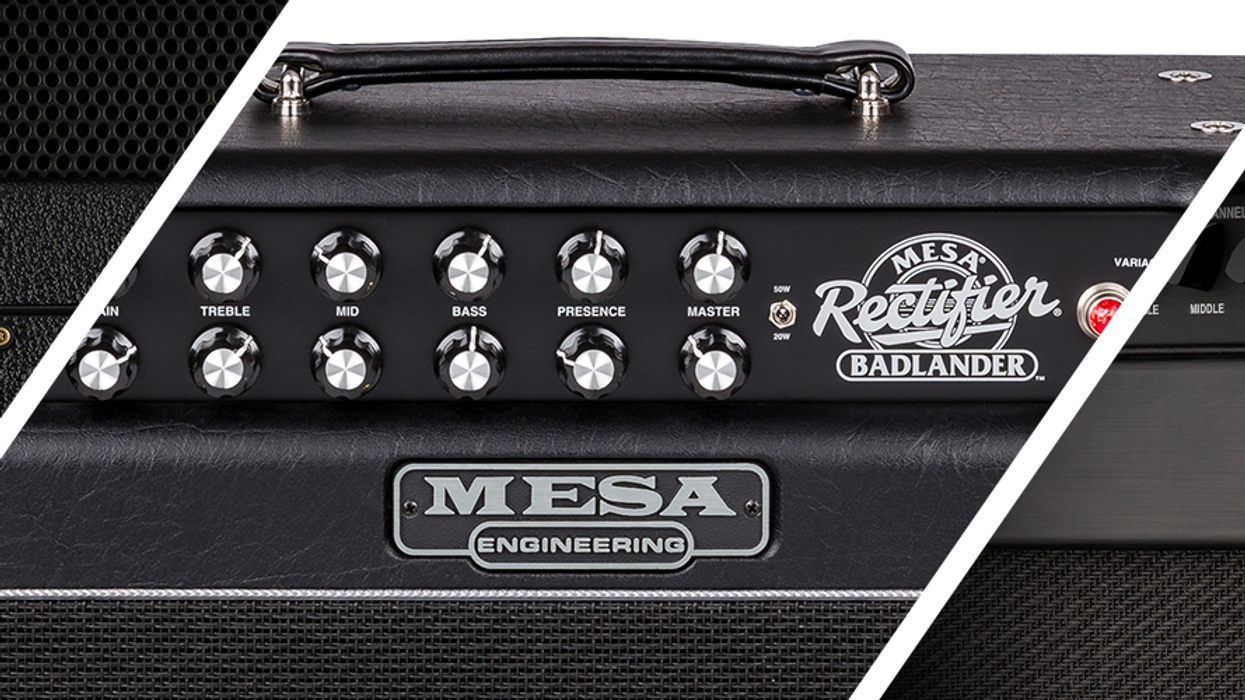Guitarists most closely associate envelope filters with funk masters, Jerry Garcia and his disciples, and, to some extent, more modern players like John Frusciante. But with funk and synth textures creeping ever more prominently back into the pop soundscape, a newer generation is adapting the effect to its own rule-breaking ends.
An envelope filter’s appeal is far from automatic. If you’ve never played one, the bubbling percussive accents and auto-wah-like textures can seem limited. And even experienced players are sometimes unable to overcome the off-kilter dynamics and responsiveness that make the effect interesting. With its classic Mu-Tron-rooted voice, Mojo Hand’s Wonder Filter may not inspire legions of converts, but its sensitive, rangy controls and capacity for mellower, more shadowy filter tones might tip the scale for skeptics.
Ride the Rainbow
Wonder Filter’s control array is smart and logically laid out. Two toggle switches populate the upper-right corner of the enclosure. The high/low switch shifts frequency range emphasis, and the drive switch determines whether the filter goes from open to closed or vice versa.
The knobs are situated in groups of three and two, along with a solo mode control. All five, which shape the Wonder Filter’s dynamics, are grouped in a blue-painted section that, like the two-color rainbow arc logo, nods to the original Mu-Tron III’s colorful, elegant enclosure graphics. The attack control determines how fast the filter acts in response to picking. The gain knob sets the input gain required to activate the filter, essentially determining the range of touch sensitivity. Boost controls the overall output from the pedal—an important consideration when using the most radical filter sounds. The peak knob determines the peak intensity of the effect, which can range to slap-in-the-face extremes. The most important control to conservative or neophyte users might be the mix knob. Curiously, you don’t often see mix knobs on Mu-Tron inspired filters. That’s most likely because the original lacked one. But it makes the pedal much more adaptable to different musical settings and enables subtle filtering effects that are very effective—particularly when you use the Wonder Filter with colors like delay and phase.
Ratings
Pros:
Fat filter sounds and fluid interactivity. Useful mix control.
Cons:
More intense sounds can lack harmonic complexity.
Tones:
Ease of Use:
Build/Design:
Value:
Street:
$229
Mojo Hand FX Wonder Filter
mojohandfx.com
The 5-position mode switch also adds functionality you don’t always see on an envelope filter. The first position, marked O, removes the filter entirely but enables you to use the boost and maintain a consistent gain profile with or without the filter. The middle three positions select high-pass, band-pass, or low-pass filters, enabling very specific sculpting of your filter sound. The fifth, or N, position activates a very subtle combined filter if you want only the mildest filter coloration.
Easily Wowed by Vowels
The Wonder Filter can be as intense and mothership-at-lightspeed funky as most users will ever require. While it lacks some of an original Mu-Tron’s deep, harmonic, and detailed resonance, it delivers piercing high-energy peaks, wide, vocal vowel sounds, and darting, laser-beam-like reverse-filter tones at high settings. And what it might lack in complexity relative to an old Mu-Tron is made up for by the forgiving and easy-to-dial-in control set.
The controls are very fluidly interactive. That means fewer cover-your-ears spikes in filter intensity. It also makes the process of exploring settings a lot more fun. A huge part of this fluid dynamic is down to the mix knob. If you’re at all accustomed to working with analog delays, the way low mix levels enable extreme delay time and feedback settings is very analogous to the way they enable exploration of high peak and gain levels on the Wonder Filter. Such settings would render some envelope filters useless for all but the most bizarre tones.
The Verdict
The Wonder Filter takes one of the coolest aspects of an envelope filter’s architecture—the reactivity to picking dynamics—and adds a mellowing measure of control that almost paradoxically enables you to explore the most extreme effects and tuck them into the slipstream of your dry signal. It rewards tinkering and unorthodox approaches to riff composition, unlocking colors you might not have known your guitar or bass could produce in the process. At 229 bucks it still may be a touch too dear to beckon the casual explorer. But for those willing to take the jump, the Wonder Filter is about as willing and welcoming as an envelope filter can get.








![Rig Rundown: Russian Circles’ Mike Sullivan [2025]](https://www.premierguitar.com/media-library/youtube.jpg?id=62303631&width=1245&height=700&quality=70&coordinates=0%2C0%2C0%2C0)

















